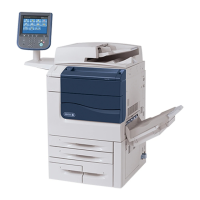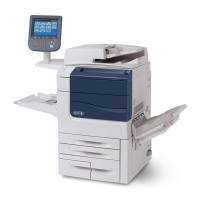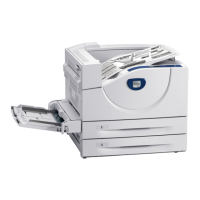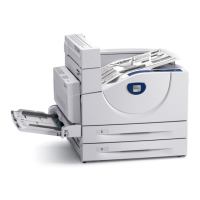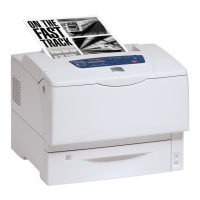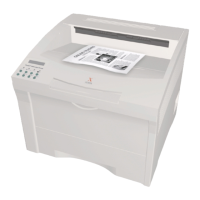The new contents
of
the destination byte string
are:
# 6 1 2 . 5 0 0 # # # 1 2 . 3 4 f) # # 0 3 5
END
The new condition
code
is:
1011
The new contents
of
register 1
are:
X'xxx02013'
PUSH-DOWN
INSTRUCTIONS
(NON-PRIVILEGED)
The
term "push-down processing
ll
refers to the programming
technique
(used
extensively
in recursive routines)
of
storing
the
context
of
a
calculation
in memory, proceeding with a
new
set
of
information, and then
activating
the previously
stored information. Typically, this process involves a
re-
served
area
of
memory (stack) into which operands
are
pushed (stored) and from which operands
are
pulled
(loaded)
on a
last-in,
first-out
basis.
The
basic processor
pro-
vides for simplified and
efficient
programming
of
push-
down processing
by
means
of
the
following non-privi leged
instructions:
Instruction Name
Mnemonic
Push
Word
PSW
Pull Word
PLW
Push
Multiple
PSM
Pull
Multiple
PLM
Modify Stack Pointer
MSP
~T6r.1C
pmNTI=R
nnnRI
I=wnRn
I~PIl\
_
...
_
.....
_
........
_
....
-----_ .. _
.....
-
,---,
Each
non-privileged
push-down instruction
operates
with
respect to a memory stack
that
is
defined by a doubleword
located
at
effective
address
of
the instruction. This
double-
word, referred to as a
stack
pointer doubleword (SPD), has
the following structure:
I
~·I
Space
count
I~I
Word
count
I
'32 '33
34 35136
37
;8
39140
41
42
431«
45
46
47148
'49
50 5 d
52 53
54 55156
57
58 59160
61
62
63!
tFor real
extended
mode
of
addressing this is a
20-bit
field (12-31); for real and virtual addressing modes
it
is a
17-bit
field (15-31).
96 Push-Down Instructions
(Non-Privi leged)
Bit positions
15
through
31
of
the
SPD
contain
a
17-bit
address field
t
that
points to the location
of
the word
cur-
rently
at
the top (highest-numbered address)
of
the
oper-
and
stack.
In
a push
operation,
the
top-of-stack
address
is incremented by 1 and then an operand in a general
reg-
ister is pushed (stored) into
that
location,
thus becoming
the contents of the new top
of
the
stack;
the contents
of
the previous top
of
the stack remain unchanged.
In
a pull
operation,
the contents
of
the
current
top
of
the
stack
are
pulled
(loaded) into a general register and then the
top-
of-stack
address is decremented by
1;
the contents
of
the
stack
remain unchanged.
Bit positions 33 through
47
of
the SPD, referred to as the
space
count,
contain
a
15-bit
count
(0
to 32,767)
of
the
number
of
word locations currently
avai
lable in the region
of
memory
allocated
to the stack. Bit positions
49
through 63
of
the SPD, referred to as the word count,
contain
a
15-bit
count
(0
to 32,767) of the number
of
words
currently
in the
stack.
In
a push
operation,
the
space
count
is decremented
by 1 and the word
count
is incremented by
1;
in a pull
oper-
ation,
the
space
count is incremented by 1 and the word
count
is
decremented
by
1.
At the beginning
of
all
non-
privi leged push-down instructions, the space
count
and the
word
count
are
each
tested to determine
whether
the
instruc-
tion would cause
either
count
field
to be incremented above
the upper limit
of
2
15
_1
(32,767),
or
to be decremented
below the lower limit
of
O.
If
execution
of
the push-down
instruction would cause
either
count
limit to be
exceeded,
the basic processor unconditionally aborts
execution
of
the
instruction, with the
stack,
the
stack
pointer
doubleword,
and the contents
of
general registers unchanged. Ordinari Iy,
the basic processor traps to location
X'42'
after
aborting
a push-down instruction because
of
impending
stack
limit
overflow
or
underflow, and with the condition code
un-
changed
from the
value
it
contained
before
execution
of
the instruction.
However, this trap
action
can be
selectively
inhibited
by
setting
either
(or both)
of
the trap
inhibit
bits in the
SPD
to
1.
Bit position
32
of
the SPD, referred to as the
trap-on-space
(TS)
inhibit
bit,
determines
whether
the basic processor
wi
II
trap to location
X'42'
as a result
of
impending overflow or
underflow
of
the
space
count (SPD33-47)' as follows:
TS
Space
count
overflow/underflow
action
o
If the
execution
of
a pull instruction would cause the
space
count
to
exceed
2
15
_1, or if
the
execution
of
a
push instruction would cause the
space
count to be
less than
0,
the
basic processor traps to location
X'42'
with the condition code
unchanged.
Instead
of
trapping to location
X'42',
the basic
pro-
cessor sets CCl to 1 and then
executes
the
next
in-
struction in sequence.
Bit position 48
of
the SPD, referred to as the
trap-on-word
('f\N)
inhibit
bit,
determines
whether
the basic processor
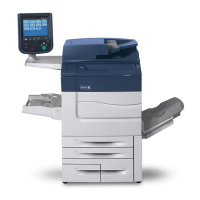
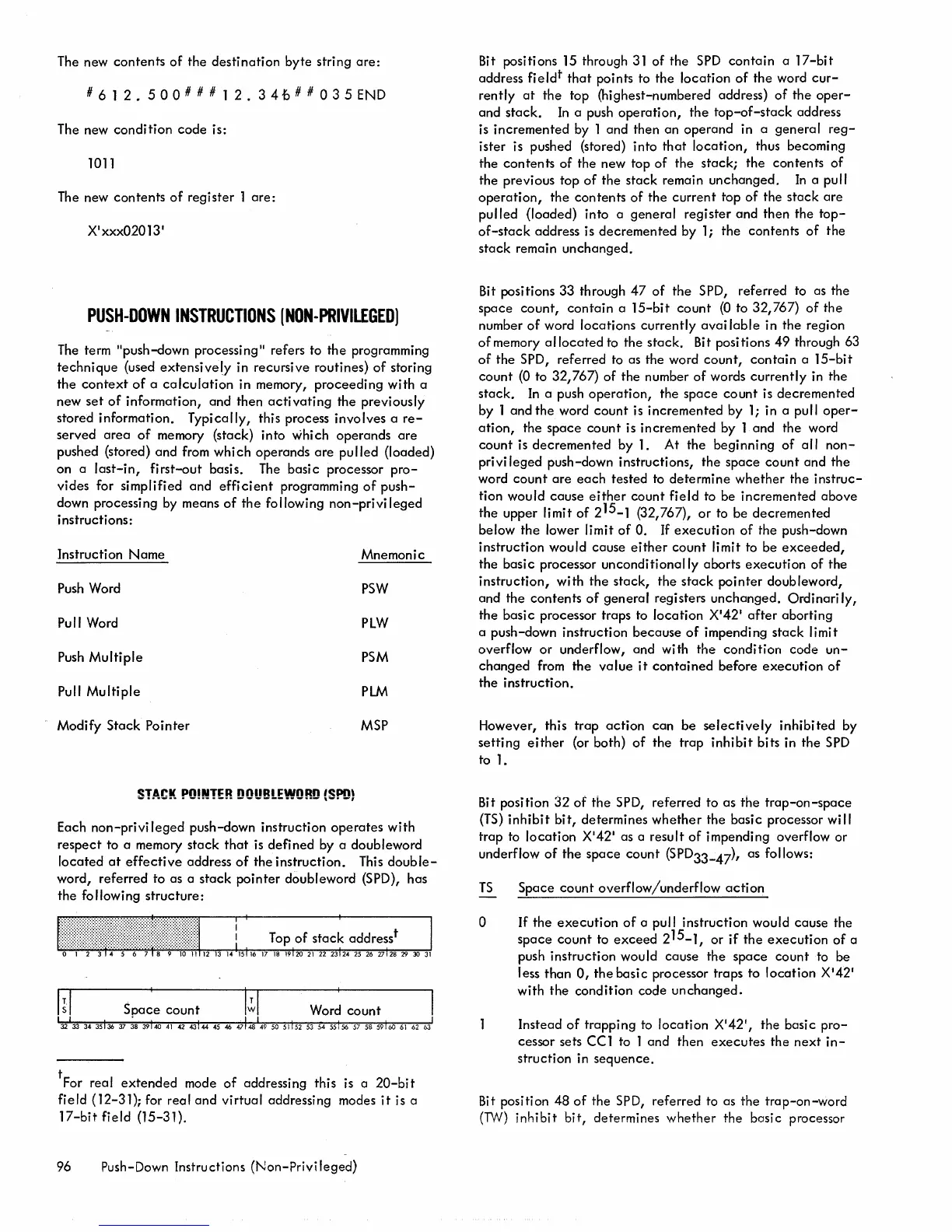